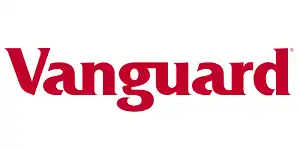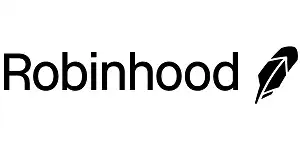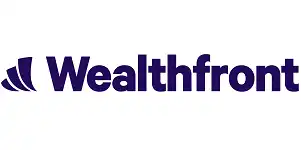When opening a new investment account, you need to decide:
- What type of investment account are you opening?
- Where are you going to open it? [Jump to recommendations]
Types of investment accounts
Before opening an investment account, it’s important to understand the most common types of investment accounts and to choose the right one.
Self-directed brokerage account: With a self-directed account, you buy and sell your own investments — typically either individual stocks or exchange-traded funds (ETFs). A self-directed account gives you the ultimate flexibility to trade as often or as infrequently as you like.
Robo-advisor account: A robo-advisor account automates the choosing, buying and selling of investments. After answering a few questions about your goals and risk tolerance, a robo-advisor invests your money appropriately. Robo-advisors are an affordable, hands-off approach to long-term investing.
Managed investment account: With a managed investment account, a financial advisor manages your investments for you. It’s more expensive than a robo-advisor, but worth it for investors who want a personal touch and “to have someone to call” with questions or changes. Learn more about finding a great financial advisor.
IRA. An IRA, or individual retirement arrangement, is a type of investment account designed for saving for retirement. When invested, money in an IRA grows tax-free. With a “traditional” IRA, contributions are pre-tax, but you must pay taxes on all withdrawals. With a “Roth” IRA, contributions are post-tax, but you do not pay federal income tax on principal or growth when you withdraw money in retirement. An IRA can be a self-directed, robo-advisor or managed investment account.
401(k). A 401(k) is a retirement-savings account that’s administered by your employer. You enroll for a 401(k) at work and investment contributions will be automatically deducted from your paycheck. Some employers will also match a certain percentage of your contributions as a benefit.
Overview: Best investment accounts for young adults
- Our Pick: Vanguard Digital Advisor
- Best beginner self-directed broker: Robinhood
- Best beginner robo-advisor: Wealthfront
- Read about the competition
Vanguard
Vanguard Digital Advisor is the robo-advisor offering from Vanguard, the world’s largest mutual fund company. Vanguard is a favorite company among us money nerds because of its focus on keeping costs low and the unique fact that the company is client-owned (similar to a credit union). If you want a “set it and forget it” approach to investing and have at least $3,000 to invest, Vanguard should be on your list.
Vanguard Digital Advisor is a low-cost robo-advisor offered by Vanguard, the world's largest provider of mutual funds.
Vanguard Digital Advisor combines Vanguard's famous low-cost index funds with personalized strategies and advice for your unique investing goals.
- Vanguard's unmatched reputation
- Advisory fees as low as 0.20%
- ESG option
- Not for active traders or stock pickers
- $3,000 account opening minimum
Importantly, you do not need to enroll with Vanguard Digital Advisor to invest with Vanguard. You can also open a self-directed Vanguard brokerage account to invest on your own. This is a good option for anyone who wants to build their own portfolio of index funds to invest for the long-run. If you’re looking to frequently trade funds and individual stocks, I would go elsewhere.
» Learn more in our Vanguard Digital Advisor Review
Robinhood
You’ve likely heard of Robinhood, and the mobile-friendly stock trading app is a solid choice. Robinhood is supremely easy to use, rich with beginner-friendly features, and requires just $1 to get started investing. If you want to try your hand at trading stocks or simply want an investment account with a slick, game-line UX, Robinhood is it.
Robinhood is a popular stock trading and investing app that offers zero-commission trades on thousands of investments, including stocks, starting with as little as $1.
With beginner-friendly features and easy-to-read charts, Robinhood is great for new investors and there's advanced features even more seasoned investors can appreciate.
- Commission-free trading
- Easy to use, well-displayed dashboard
- No obligation or minimum account balance
- No bonds or mutual funds
- Crypto fees can be more transparent
Here are some fast facts about Robinhood:
- Account minimum: $0, $2k for Robinhood Gold (margin, more data)
- Trade/account management fees: None
- Investment options: Stocks, ETFs, cryptocurrency
- Offers retirement accounts (IRAs): Yes
When the Robinhood investing app launched, it changed the investing world with its commission free trades; allowing investors to purchase investments fee-free. (Until recently, most brokers charged a commission of around $5 each and every time you wanted to buy or sell a stock or ETF). Now, virtually all investment accounts have dropped such trading commissions. But we have Robinhood to thank.
One of the best things about Robinhood for new investors is the ability to buy fractional shares of stock. Traditionally if you wanted to buy a share of, say, Microsoft, when it’s trading at $320, you’d have to pay $320 for one whole share. But with Robinhood, you can simply say “I want $50 worth of Microsoft” and Robinhood will carve a slice for you.
Despite being known as “the platform for stock market newbies,” Robinhood provides some pretty advanced features like margin trading, options, and access to some cryptocurrencies. Although we don’t necessarily recommend new investors use these features, which can lead to big losses for the inexperienced, it’s nice to know that a Robinhood account is not simply a set of “training wheels” for new investors.
» MORE: Open an account with Robinhood or read our Robinhood review
Wealthfront
Wealthfront, which is now owned by Swiss financial giant UBS, is another best investment account for beginners because of its low account fees, clever automation, and because it only requires $500 to start. They also offer an attractive cash management bank account where your uninvested cash can earn a 5.00% APY.
Wealthfront is designed for young professionals, anyone from passive investors who want expert digital guidance, to people who want to be smarter with money.
With low fees and multiple tax perks, automated investment management tuned in to your individual risk level make Wealthfront worth a look.
- Passive investing with automated management
- Tax-loss harvesting
- Ability to customize portfolios
- No fractional shares of ETFs in automated accounts
- No human advisors
Wealthfront is a managed investment account (also known as a robo-advisor). Robo-advisors work differently than stock brokerage accounts. We recommend these kinds of investment accounts for new investors because you don’t need to know anything about investing to get started and allow you to invest in a widely diversified portfolio of stocks and bonds. This strategy, known as passive investing, provides the highest, most consistent returns over the long-run and is much less risky than trying to pick individual stocks.
Here are some quick things to know about Wealthfront:
- Account minimum: $500
- Trade/account management fees: 0.25% annual account management fee
- Investment options: Pre-built portfolios of exchange-traded funds
- Offers retirement accounts (IRAs): Yes
Wealthfront also allows for a fair degree of customization as you become more comfortable with investing. You can add or remove vetted ETFs to and from your portfolio as you wish. You can also choose from categories like technology ETFs, healthcare ETFs, cannabis ETFs, and more.
It can also help you build an entirely ESG (environmental, social, governance) portfolio from scratch so you can rest well knowing your investments are benefiting the world.
Lastly, Wealthfront lets you dabble in crypto, albeit indirectly. You can allocate up to 10% of your portfolio to two different crypto trusts, Grayscale Bitcoin Trust (GBTC) and Grayscale Ethereum Trust (ETHE). You should know, however, that investing in a crypto trust can be just as risky as crypto itself — so be sure to read our complete guide to investing in cryptocurrency first.
» MORE: Open an account with Wealthfront or read our Wealthfront review
The competition
Choosing the best investment accounts to recommend to young investors is never easy. There are dozens — no, hundreds — of companies vying for your investment dollars. In this highly-regulated industry, all of them will be good stewards of your assets. But to earn our seal of approval, an investment account needs to be “beginner friendly”. It shouldn’t require a large minimum investment or charge excess fees. And it should make investing easy, even for new investors.
Here are several of the best investment platforms we considered.
J.P. Morgan Self-Directed Investing
J.P. Morgan Self-Directed Investing offers Chase clients tremendous convenience and new investors an intuitive investing platform with unlimited commission-free online stock, ETF and options trades.
It's ideal for those who are interested in learning the market with no investment minimums attached.
- Exceptional customer support
- Simple, intuitive interface
- Easy integration for existing Chase customers
- Advanced traders may want additional functionality
- Portfolio Builder requires $2,500 min.
- Account minimum: $0
- Trade/account management fees: None
- Investment options: Stocks, options, ETFs, bonds, mutual funds
J. P. Morgan Self-Directed Investing is a solid pick for two types of investors.
The first group is existing Chase customers. It’s a good fit for them because you can log into Chase, open a new brokerage account in just a few clicks, and voila — your Self-Directed Investing account will live on your Chase dashboard forever, conveniently wedged between checking/savings accounts and instantly accessible. You can also move money between your other Chase accounts and your SDI account in a single click.
It’s worth mentioning that you can also open an Automated Investing account with Portfolio Builder with a minimum $500 investment.
» MORE: Open a J.P. Morgan Self-Directed Investing account today or read our J.P. Morgan Self-Direct Investing review
Acorns
If you want to start investing with little money, set up small recurring investments of $5 or more, or are looking for a “do it all” app that can help you manage investing, saving and spending, Acorns can do it.
Acorns makes it easy to start investing (even if you know nothing) and provides helpful tools to help you save more automatically. In under 3 minutes, start investing spare change, saving for retirement, earning more, spending smarter, and more.
- Effortless automated investing
- Easy-to-use savings features
- Low-cost solution to manage money
- Flat monthly fee more expensive for smaller accounts
- Can use more robo-advisor features
Looking for help building the habit of saving and investing?
Robo-advisor Acorns looks to strip all the intimidation away from investing and help you build consistent, healthy financial habits. For starters, you can use Acorns Round-Up to automatically round up all of your credit card purchases to the nearest dollar and invest the change for you.
Here are some quick things to know about Acorns:
- Account minimum: $0
- Trade/account management fees: $3 per month
- Investment options: Pre-built ETF portfolios
- Offers retirement accounts (IRAs): Yes
For larger scale investments, Acorns Smart Deposit will automatically debit your checking account and invest a certain amount each month, too.
As for building a portfolio, Acorns operates like a typical robo-advisor — during sign-up it’ll ask you some basic questions about your investing goals, horizon (read: timeline) and your risk tolerance (which we can help you measure).
Then, based on your answers, Acorns will recommend one of five portfolios:
- Conservative
- Moderately Conservative
- Moderate
- Moderately Aggressive
- Aggressive
Pick one, set up Acorns Round-Up and Acorns Smart Deposit, and boom! You’re all set.
Acorns charges $3 a month for a basic Personal account — tantamount to a standard 0.25% advisory fee on an account balance of $14,440.
» MORE: Open an account with Acorns or read our Acorns review
Public
Public offers a wide range of investment offerings backed by a more social, interactive and communal investing experience.
Public is a investing platform with mobile app that has a wide range of offerings and features beginners will appreciate.
With Public, you can invest in stocks, bonds, Treasuries, crypto, ETFs, music royalties and alternative assets—with access to a social feed—all in one place.
- Commission-free trading on stocks and funds
- Fractional shares with low minimums
- High-Yield Cash Account that earns 5.1% APY
- Resources for beginners and community
- Does not support all account types
- No mutual funds
- Account minimum: $0
- Account maintenance fees: $0
- Investment options: Stocks, ETFs, bonds, Treasuries, crypto, music royalties and alternative assets
When you sign up for Public and choose a username, you create a Public profile which shows all the stocks/ETFs you are invested in without the specific dollar amounts — a bit like a Venmo activity feed. You get access to a large, social community forum where ideas flow freely. You can contribute to the conversation, chat with other investors, like comments, and even emulate the investing strategies of professional traders who regularly engage with the platform.
Aside from the social stuff, Public checks the essential boxes of a modern investing platform (fractional shares, DRIP, $0 trade commissions, etc.) and also organizes investing ideas into “Themes” like Green Power or Women in Charge (female-led S&P 500 companies).
It also checks the box if you’re looking for more. With Public, you can invest in stocks, bonds, Treasuries, crypto, ETFs, music royalties and alternative assets—all in one place. That covers almost everything from Pokémon cards to Bitcoin. There’s even a High-Yield Cash Account earning 5.1% APY with with up to 5M FDIC insurance.
» MORE: Sign up for Public or read our full Public app review
Fidelity
We’ve previously called Fidelity “the most comprehensive of interactive brokers out there.” You’ll get a bonafide cornucopia of account types, investment choices, human or robo-advisor management of your portfolio, educational resources, analytics, and more.
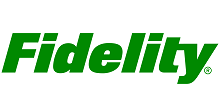
- Minimum investment: $0
- Trade/account fees: None for trades, none for Fidelity Go accounts with balances <$10k, $3/month for between $10k-$50k, 0.35% annually for balances larger than $50k
- Investment options: Stocks, bonds, ETFs, actively managed funds, CDs, options, precious metals, money market funds
While perhaps intimidating to newcomers, Fidelity’s vast and expansive toolkit combined with low fees make it the perfect playground for aspiring or experienced day traders. It’s worth noting, too, that Fidelity has been around since 1946 and now has $4.5 trillion in assets under management.
Why does that matter to day traders? Because newer, less experienced brokerages can sometimes buckle under intense trading volume. Day traders on a robust platform like Fidelity are less likely to experience such issues when it matters most.
» MORE: Read our full Fidelity review
Interactive Brokers

Interactive Brokers is a longstanding favorite trading platform of professionals and serious individual investors that you can use, too. Featuring commission-free stocks, powerful trading tools and access to foreign markets and cryptocurrency trading, it works best for active traders looking for these included. Whether your primary goal is simply to invest in individual stocks and ETFs or you want to be able to trade options, on foreign markets, or on margin, Interactive Brokers is an option for a variety of investors.
Interactive Brokers has two pricing models: Pro and Lite. Interactive Brokers Lite will appeal to most casual traders. The biggest difference between Lite and Pro is the priority and cost of order execution.
Interactive Brokers offers quite a bit of investment options many other U.S. stock brokers open to individual investors. Clients from over 200 countries can trade on 150 global markets from a single unified platform. Plus, they can also fund their account and trade assets in 27 currencies. You can also trade Bitcoin, Ethereum, Litecoin and Bitcoin Cash.
Betterment
For investors who want more than an automated portfolio, Betterment offers premium plans that include either annual or ongoing consultations with a team of Certified Financial Planners® and investment experts.
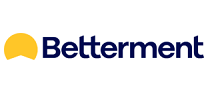
- Account minimum: None for Basic, $100k for Premium
- Trade/account management fees: 0.25% for balances under $100k, 0.40% for balances $100k+
- Investment options: Pre-built stock and ETF portfolios (crypto coming soon)
Not sure if you want a robo-advisor or a human financial advisor? Why not both?
For investors who want more than an automated portfolio, Betterment offers premium plans that include either annual or ongoing consultations with a team of Certified Financial Planners® and investment experts.
You’ll start with Betterment’s robo-advisor product, which can help you build a healthy, profitable portfolio for a 0.25% annual fee. Later, as you accumulate more wealth, you may decide you want some professional advice on both your portfolio and your savings goals. So, once you reach a $100,000 balance you can hop on Betterment’s Premium plan and gain unlimited access to their CFP® team for advice.
Sure, your annual fee raises to 0.40% — but that’s less than half of the 1% most human advisors charge.
Betterment also offers a no-fee checking account, mobile check deposits, and reimburses your ATM fees.
» MORE: Read our full Betterment review
M1
M1 is fast becoming the community’s favorite app for passive investing.
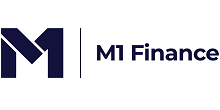
- Minimum investment: $100 for taxable account, $500 for a retirement account
- Trade/account management fees: None (misc. fees for transfers, paper documents, etc.)
- Investment options: Stocks, ETFs, REITs
Passive investing involves crafting “lazy portfolios,” i.e., portfolios that need little-to-no active management. They may need the occasional tweaking every six months based on your changing wealth, income, and risk tolerance, but otherwise you can just set ‘em and forget ‘em. It’s like the opposite of day trading, and despite the name, building “lazy portfolios” is a surprisingly profitable investing strategy.
The reason many passive investors like M1 is because of its unique Pie-building tool. M1 “Pies” are investment portfolios made up of “slices.” Each time you deposit cash into your Pie, it gets equally distributed among your slices.
So if you have a tech pie made up of 20% Amazon, 20% Google, and 60% into varios NASDAQ ETFs and you deposit $100, it’ll be split $20 into Amazon, $20 into Google, etc.
In addition to custom Pies you can just copy/paste some of M1’s “Expert Pies” and remove all the guesswork. Later, as your risk tolerance changes, you can task M1 with automatically rebalancing your Pie for you.
E*TRADE
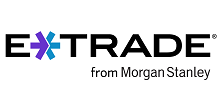
- Minimum investment: $0, but account must stay funded to remain open
- Trade/account management fees: None for trades, 0.30% account management fee for Core Portfolios
- Investment options: Stocks, options, futures, ETFs, mutual funds, bonds, CDs
Having been one of the first online brokers and in the game since 1982, E*TRADE has a lot to offer the modern intermediate-level investor. The platform is perhaps best known for its wide variety of account types and is good option for frequent traders. Those include, but aren’t limited to:
- Taxable individual and joint brokerage accounts
- Traditional, Roth, SEP, SIMPLE and rollover IRAs and Solo 401(k) plans
- Custodial accounts, trusts, and Coverdell Education Savings Accounts
And investment options include:
- Stocks
- Bonds
- Mutual funds
- Exchange traded funds (ETFs)
- Options
- Futures
- Cryptocurrency trusts
E*TRADE also stands out with options trading. Their Power E*TRADE Platform is one of the best brokerage accounts in the industry, offering interactive charts, technical pattern recognition, a snapshot analysis enabling you to evaluate risk/reward probabilities, the ability to run “what-if” scenarios, and a live-action capability where you can scan for unusual options activity, based on above-normal volatility.
» MORE: Read our full E*TRADE review
How we picked the best investment accounts
We selected the best investment accounts for young investors based upon over a decade of experience reporting on beginning investing.
SEC and FTC regulations prohibit us from talking about our individual experience using these accounts (such “testimonials” are a big no-no in the investing world.) But we have gathered plenty of data that gives us an accurate picture of where each investment account excels and where each is better-suited for different kinds (often, more advanced) investors.
To be considered in our list of best investment accounts, a company must:
- Have a track record (no fly-by-night companies here)
- Be attainable for new investors (low minimums and fees)
- Offer options for passive, buy-and-hold investing
- Have reputation for customer satisfaction and complaint resolution
After looking at these factors, our picks come down to the companies we feel deliver the best experience for new investors. It’s an admittedly subjective criteria, but we believe our long history of evaluating and reporting on the fintech industry gives us a wealth of experiecne from which to make these calls.
FAQs
What is a taxable investing account, aka brokerage account?
A brokerage account is simply a basic account used to buy and sell securities like stocks, bonds, ETFs, etc. By default, we’re referring to a taxable brokerage account — meaning you’ll owe capital gains taxes on your profits and income tax on dividends and interest. Compare this to a traditional individual retirement account (IRA), which offers tax advantages because you don’t have to pay any taxes on profits or dividends.
What is a robo-advisor, and is it better than a human financial advisor?
Robo-advisors are AI algorithms that help pick your investments for you, typically based on questions about your goals and risk tolerance. Human advisors do the same and charge more (1% compared to 0.25%), but can help guide you and find your goals in the first place. Both have value; there’s no wrong choice.
How much money should I be investing at my age?
A good starting point is 20% of your income. Don’t be afraid to start small —$100 invested at age 25 with 8% APY will become $1,478.53 by age 60.
Should I be choosing my own investments?
If you’re new to investing, it’s best to let your robo- or human advisor do most of the choosing for you. If you’re eager to get hands-on, start with a small slice of your overall portfolio — maybe 5% — to hedge your risk.
What’s the best brokerage account to trade stocks?
The best brokerage account to trade stocks depends on whether you’re going to be a frequent trader or, like most investors, want the option to occasionally buy and sell stocks via mobile app. We stand by our top pick for brokerage account, Robinhood, if you want the ability to trade stocks via mobile app but not the advanced features of some larger brokerage firms.
Why do investment companies have account minimums?
Many trading platforms do have account minimums because it’s just not profitable to offer financial services on very small accounts. That’s one of the things that makes our picks for best trading platforms stand out — most are great for beginning investors because they have no (or very small) account minimums.
What is a mutual fund?
Mutual funds are a type of investment that combines hundreds of stocks, bonds or other investments into a single fund. Although mutual funds remain a good investment choice for long-term, buy-and-hold investors, over the past two decades, exchange-traded funds (ETFs) have become increasingly more popular.
Mutual funds and ETFs are similar: Both are funds containing many different investments to provide a desired mix of asset classes. The difference is how they are bought and sold. ETF trades work just like a stock; you can buy or sell them any time the stock market is open. Mutual funds are priced once a day and typically take a few days to trade.
A mutual fund can be an index fund or an actively managed fund. With an actively managed mutual fund, a professional investment manager picks stocks and makes trades in an attempt to maximize investment performance.
The bottom line
The most important thing is that you get started investing, period.
If you’re looking to get started investing, there are no wrong choices among the investment accounts listed above. Plus, you can always change platforms later.
Read more:
Vanguard Digital Advisor disclosure
Vanguard Digital Advisor is an all-digital service. Digital Advisor’s annual net advisory fee is approximately 0.15% across your enrolled accounts for a typical investment portfolio, although your actual net fee will vary depending on the specific holdings in each enrolled account. Vanguard Digital Advisor charges a 0.20% annual gross advisory fee to manage Vanguard Brokerage Accounts. However, we’ll credit you for the revenues that The Vanguard Group, Inc. (“VGI”), or its affiliates receive from the securities in your Digital Advisor managed portfolio (i.e., at least that portion of the expense ratios of the Vanguard funds held in your portfolio that VGI or its affiliates receive). Your net advisory fee can also vary by enrolled account type. The combined annual cost of Vanguard Digital Advisor’s annual net advisory fee plus the expense ratios charged by the Vanguard funds in your managed portfolio will be 0.20% for Vanguard Brokerage Accounts. For more information, please review Form CRS and the Vanguard Digital Advisor brochure.
Enrollments in Vanguard Digital Advisor require at least $3,000 in each Vanguard Brokerage Account. For each taxable account or traditional, Roth, or rollover IRA you wish to enroll, the entire balance must be in certain allowable investment types (based on eligibility screening by Digital Advisor at the time of enrollment) and/or the brokerage account’s settlement fund. We’ll [typically] invest your assets in a portfolio of Vanguard ETFs®, all of which are commission-free through a Vanguard Brokerage Account. Vanguard Brokerage Accounts are offered through and maintained by Vanguard Marketing Corporation (“VMC”), a registered broker-dealer and member FINRA and SIPC. If you decide to manage your investments on your own, you can buy and sell Vanguard ETF Shares through Vanguard Brokerage Services® or another broker (which may charge commissions).
Vanguard Digital Advisor’s services are provided by Vanguard Advisers, Inc. (“VAI”), a federally registered investment advisor. VAI is a subsidiary of VGI and an affiliate of VMC. Neither VAI, Digital Advisor, VGI, nor VMC guarantees profits or protection from losses.
